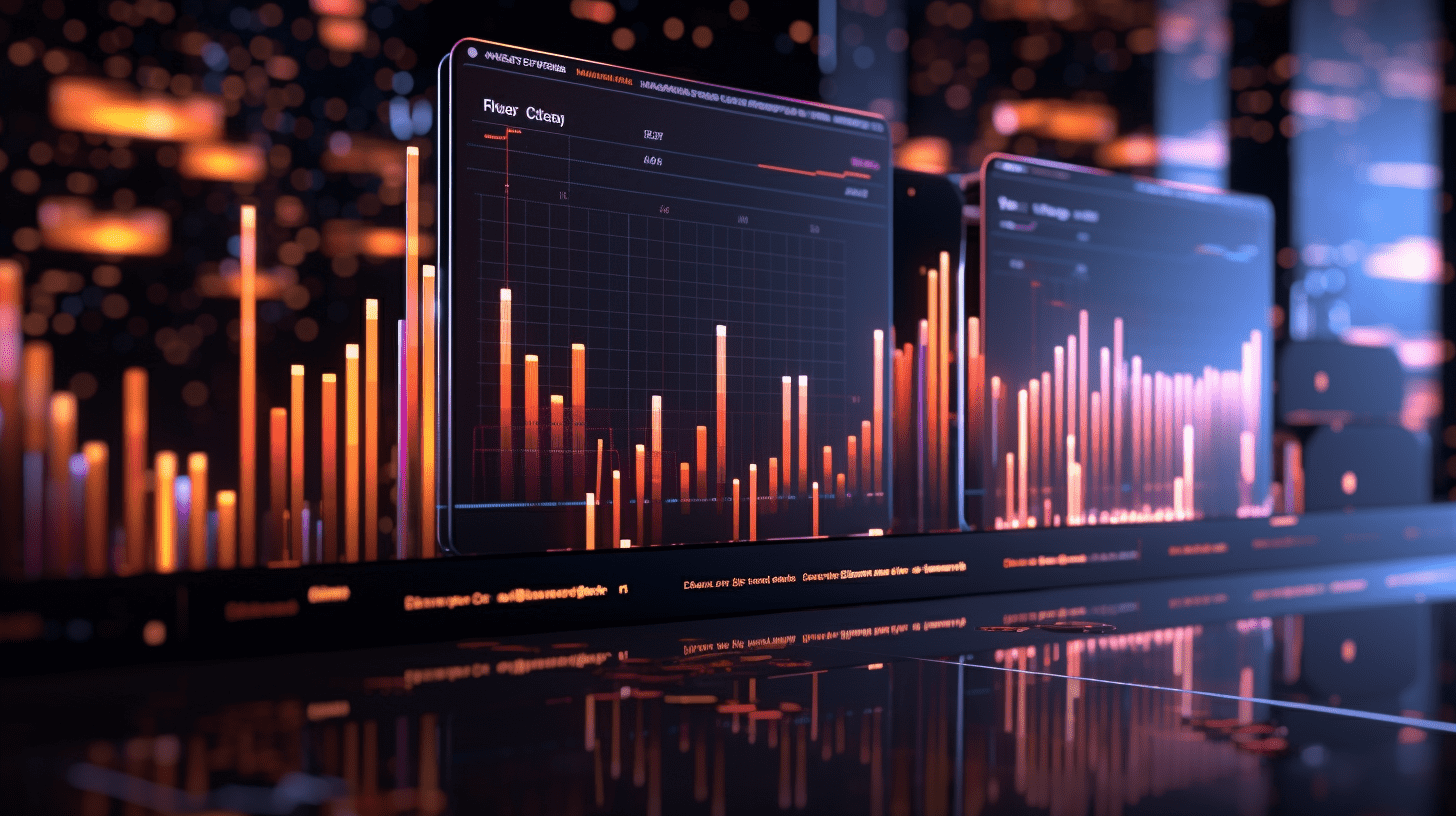Silver prices have surged, will small varieties see a big market demand?
Silver prices have risen more than gold prices this year, and the gold-to-silver ratio is expected to return.
Since the beginning of this year, "rising gold prices" have frequently occupied the top searches on major platforms. However, in fact, the increase in silver prices has quietly surpassed that of gold. According to the latest market data, London silver spot prices have risen by 30.85% since the beginning of the year, significantly higher than the 26.91% rise in London gold spot prices during the same period, making it a more dominant asset in the precious metals race.
Since June 5th, silver has surged, breaking through to new highs after a slight consolidation. On July 14th, the London silver spot price briefly rose above $39 per ounce, reaching a nearly 13-year high since September 2011.
In the short term, the sharp rise in silver prices can be attributed to three main factors. 1) The weakening of the US dollar index since June 5th, which is favorable for the currency properties of silver; 2) Increased risk appetite: With better-than-expected job additions in the US in April and May, the economy has shown some resilience, leading to an increase in risk appetite funds, with silver benefiting more than gold; 3) Silver trading volume is relatively small and easily influenced by capital, according to LBMA, the average daily trading volume of gold in 2024 was $111.99 billion, while the average daily trading volume of silver was only $11.95 billion, with silver trading volume accounting for only 10.7% of gold. As a good "substitute for gold," fluctuations in capital flow will have a significant impact on silver.
Against this backdrop, the short-term momentum for silver price increases is strong. Looking from a medium to long-term perspective, silver still has room for growth.
The main source of supply comes from companion mines, and primary silver ore supply may still be firm
In 2024, the total global silver supply is approximately 31.6 thousand tons, an increase of 1.7% compared to the previous year. Silver mine supply is highly concentrated geographically. In 2024, the global silver mine supply totaled 25,497 tons, with the CR5 of silver mine supply being 60%. The top five silver mine supply countries in the world were Mexico (5,775 tons, 23%), China (3,426 tons, 13%), Peru (3,359 tons, 13%), Bolivia (1,486 tons, 6%), and Chile (1,342 tons, 5%).
In recent years, due to declining ore grades and frequent disturbances at the mine end, primary silver mine supply has exhibited rigid characteristics. Historically, from 2016 to 2024, the total supply CAGR is -0.5%. It is worth mentioning that the proportion of primary and secondary silver remains stable, with primary silver accounting for 80.8% of global silver supply and secondary production accounting for approximately 19.1% in 2024.
Newly discovered silver resources mostly exist in the form of gold-associated ores, and silver associated with copper and lead-zinc ores also occupies an important position. The elastic growth of silver reserves will be released from the development of companion mines.
In addition to declining ore grades, global inflation has pushed up the production costs of silver. According to IMF data, global inflation rates have been climbing since 2021, reaching a peak of 8.6% in 2022. Although there has been some easing in the past two years (6.7% in 2023 and 5.8% in 2024), it has remained at a high level for the past decade. According to the average global inflation rate, the average for the period from 2010 to 2020 was 3.5%, rising to 6.5% from 2021 to 2024, showing a shift in the global inflation center.
High inflation has led to a continuous increase in labor costs, with some mining companies facing labor shortages and frequent disturbances due to strikes. In addition, high inflation combined with the Russia-Ukraine conflict has led to a continuous rise in energy costs such as electricity and diesel, leading to a continuous increase in silver mining production costs.
However, as most silver mines are located in companion mines, the revenue from other metals can offset the production costs of silver mines. In terms of the types of accompanying ores, 29.4% of global silver production in 2024 comes from lead-zinc-silver ores, 27.8% from independent silver mines, 26.8% from copper-silver ores, 15.5% from gold-silver ores, and 0.5% from other accompanying ores.
As a common accompanying metal for silver, the spot prices of copper, gold, lead, and zinc rose by 7%, 28%, 7%, and 20%, respectively, in 2024. Therefore, the production costs of silver in 2024 have shown a decline, but are still at a high level in the past decade.
Overall, the supply of silver from mines may continue to exhibit rigid characteristics. On the one hand, due to declining ore grades and rising inflation pushing up silver production costs, mining companies need to continue to invest heavily to maintain current production levels. Therefore, the rise in silver prices may not be fully reflected in the profits of mining companies, with little improvement seen in the operating cash flow of companies focusing on silver as a key business. In fact, in recent years, many silver mining companies have had negative free cash flow, reducing their willingness to expand production.
On the other hand, the share of silver production from independent silver mines is only about 28%, while the share from accompanying mines exceeds 70%. Approximately 55% of silver production comes from by-product metals, which significantly affects the price elasticity of silver supply from mines.
Furthermore, silver mining projects have longer operation cycles, averaging around ten years, with exploration periods of about 5-6 years and construction periods of 4-5 years. From the current capital expenditure plans of silver mining companies, there are not many large-scale mines coming online to change the supply pattern of silver from mines.
Global silver demand has entered a stage of structural expansion
From a demand perspective, global silver demand has entered a stage of structural expansion. After 2020, global silver demand has shown a significant increase, with overall demand staying above 34,000 tons since 2021. However, in recent years, the growth rate of silver demand has shown a marginal decrease, with global silver demand in 2024 falling by 2.9% year-on-year to 36,200 tons, mainly dragged down by a decrease in demand for physical silver investments.
Structurally, silver's downstream demand consists mainly of industrial demand, jewelry demand, physical investment demand, silverware demand, and photography demand, accounting for 58.5%, 17.9%, 16.4%, 4.7%, and 2.2% of total demand respectively.
In terms of industrial demand, the silver market has seen continuous expansion from 2019 to 2024. Global industrial silver demand has increased from 16,281 tons in 2019 to 21,165 tons in 2024, an increase of 4,884 tons, accounting for 98% of the total growth in silver demand during the period from 2019 to 2024. In terms of annual compound growth rates, industrial silver demand showed a CAGR of 5.4%, which is higher than the overall demand growth rate of silver.
During the same period, jewelry demand has increased from 6,270 tons to 6,491 tons, with a CAGR of 0.7%; and physical investment demand increased from 5,828 tons to 5,939 tons during that time. However, demand for silverware and photography decreased during this period, with silverware decreasing from 1,906 tons in 2019 to 1,684 tons in 2024, and photography from 956 tons to 792 tons.
In the electrical and electronics industry, silver demand is mainly driven by electronics and electrical appliances, solder alloys and fluxes, and other industrial sectors. The demand for silver in the electrical and electronics industry in 2024 was approximately 14,323 tons, accounting for 67.7% of industrial silver demand.
The main sector in the electrical and electronics field consists of photovoltaics, automobiles, and other industries, with the photovoltaic industry accounting for the largest demand for silver, reaching 6,147 tons in 2024, representing 29% of industrial silver demand.
Demand for silver in photovoltaics is primarily driven by the replacement of N-type cells as well as the continuous increase in photovoltaic installations. Due to silver's excellent conductivity, adhesion, and high reflectivity, silver paste has become an indispensable material in the production of solar cells. In the cost structure of solar cells, the cost of silver paste accounts for about 10%, ranking second only to silicon wafers. After 2022, the photovoltaic industry has entered a period of technical transformation, gradually replacing traditional P-type cells with more efficient N-type cells. At the end of 2022, the market share of P-type cells was still close to 90%, with an estimated penetration rate of N-type cells at 30% in 2023, and the data is expected to reach 75% in 2024. It is estimated that by 2025, N-type cells will replace P-type cells as the preferred choice for solar cells.
N-type cells mainly include TOPCon cells and HJT cells, with silver consumption of 14 tons/GW and 23 tons/GW, respectively, compared to the 9 tons/GW for P-type cells. Therefore, as the installation of photovoltaics increases, the demand for silver in photovoltaics also rises.
In addition to photovoltaics, the new energy vehicle industry is also a growth point for silver demand. Due to silver's excellent conductivity, oxidation resistance, and corrosion resistance, silver is consumed in components such as silver-plated wires and contacts in pure electric vehicles, leading to growth in silver demand with the development of the new energy vehicle industry.
According to data from the World Silver Association in 2024, the average silver consumption per ten thousand traditional internal combustion engine vehicles is approximately 217.7 kilograms, while this value is 264.4 kilograms and 373.2 kilograms in hybrid vehicles and pure electric vehicles, respectively, increasing by 21% and 71% compared to traditional vehicles. With the continuous development of the new energy vehicle industry and the increasing market penetration of new energy vehicles, the industry will provide continuous incremental demand for silver.
Other electrical and electronic industries such as switchgear in electricity grid upgrades, transformers, and other equipment, as well as electric contact materials used in 3C electronics, also have certain demand for silver. In 2024, the combined silver demand for other electrical and electronic industries was approximately 5,942 tons, accounting for 28.1% of industrial silver demand. The demand for silver in solder alloys and fluxes amounted to 1,605 tons, accounting for 7.6% of industrial silver demand. Other industries include AI (semiconductors, cloud data centers, etc.), chemical catalysts, clean water, food, and medical uses, with a total silver demand of approximately 5,237 tons in 2024, accounting for 24.7%.
From a balanced perspective, according to the World Silver Association's forecast, it is expected that global silver will still be in a shortage in 2025, with a shortage of about 3,660 tons, slightly converging compared to 2024. The supply side is expected to increase by 1.5% for the whole year, with mineral silver expected to increase by 1.9% and recycled silver production decreasing by 0.4%. On the demand side, non-industrial demand represented by silverware and photography to some extent drags down the overall demand growth rate, with the total global demand growth rate expected to reach -1.4% for the year. Under the assumption of supply increase and demand decrease, there will still be a supply-demand gap in global silver, providing strong fundamental support for the silver price.
In conclusion, in the short term, with gold continuing to set new historic highs this year, silver prices are currently at a relative low level in both absolute and relative terms. Silver is expected to rise, and the gold-to-silver ratio is expected to return. In the medium to long term, as silver has industrial metal properties, there is a supply-demand gap, providing strong support for the silver price.
The sustained strength of silver prices bodes well for related companies taking advantage of it. For example, CHI SILVER GP (00815), this company is a leading silver producer and integrated operator in the precious metals industry, covering the entire industry chain of silver manufacturing, new retail jewelry, and silver trading. The company holds certification from the London Bullion Market Association (LBMA) and produces silver ingots with a purity of 99.999%, the highest level globally. In 2024, the company achieved total operating revenue of 4.319 billion yuan, a year-on-year decrease of 20.97%; of which, sales revenue from silver ingots was 4.156 billion yuan, accounting for 96.3% of total revenue. Net profit attributable to the mother was 9.966 million yuan, a year-on-year decrease of 31.5%.
Zijin Mining Group (02899): The global mining giant, with silver associated with copper and gold mining, stands to benefit from the rise in silver prices. In addition, as a comprehensive mining giant, Zijin Mining Group has strong counter-cyclical capabilities, with the company achieving operating income of 78.928 billion yuan in the first quarter of 2025, a year-on-year increase of 5.55%; and a net profit attributable to the mother of approximately 10.167 billion yuan, a year-on-year increase of 62.39%, firmly positioned as an industry leader.
JIANGXI COPPER (00358): The company is China's largest comprehensive copper producer and has established a complete industrial chain business core centered on the mining, beneficiation, smelting, processing of copper and gold, as well as the extraction and processing of sulfuric acid, precious and rare metals. Its "Jiang Copper" silver is a registered product with the LBMA, internationally recognized. Although the silver business accounts for a small proportion (about 3.25%), as a by-product of copper and gold smelting, its production is stable and internationally competitive. If silver prices continue to rise and industrial demand further increases, this business may bring additional revenue to the company.
Related Articles

Huachu Securities: Shunfeng (06936) continues to lead in the volume growth rate in June, pay attention to investment opportunities in the express delivery sector under the "anti-inner loop" trend.

Guosen: How to make absolute return investments in a low interest rate environment?

Preview of new stocks in the US stock market | Industry anti-involvement helps to repair the fundamentals, how does New Subee Optoelectronics (XZ.US) break into the top tier of the industry?
Huachu Securities: Shunfeng (06936) continues to lead in the volume growth rate in June, pay attention to investment opportunities in the express delivery sector under the "anti-inner loop" trend.

Guosen: How to make absolute return investments in a low interest rate environment?

Preview of new stocks in the US stock market | Industry anti-involvement helps to repair the fundamentals, how does New Subee Optoelectronics (XZ.US) break into the top tier of the industry?

RECOMMEND

For the Third Consecutive Month, China Reduces U.S. Treasury Holdings by $900 Million in May, While Japan and the United Kingdom Increase Holdings
18/07/2025

Tariff-Driven Inflation Arrives with Delay as U.S. Consumers Begin to Feel the Initial Pinch
18/07/2025

Multiple Countries in High-Stakes Talks with the U.S.; EU Considers Invoking “Anti-Coercion Tool” as U.S. Plans Unified Tariffs on 150 Nations
18/07/2025


